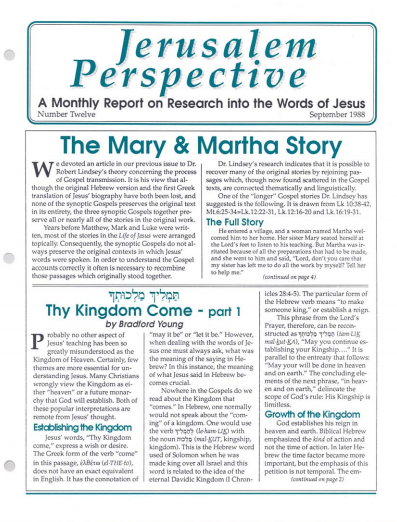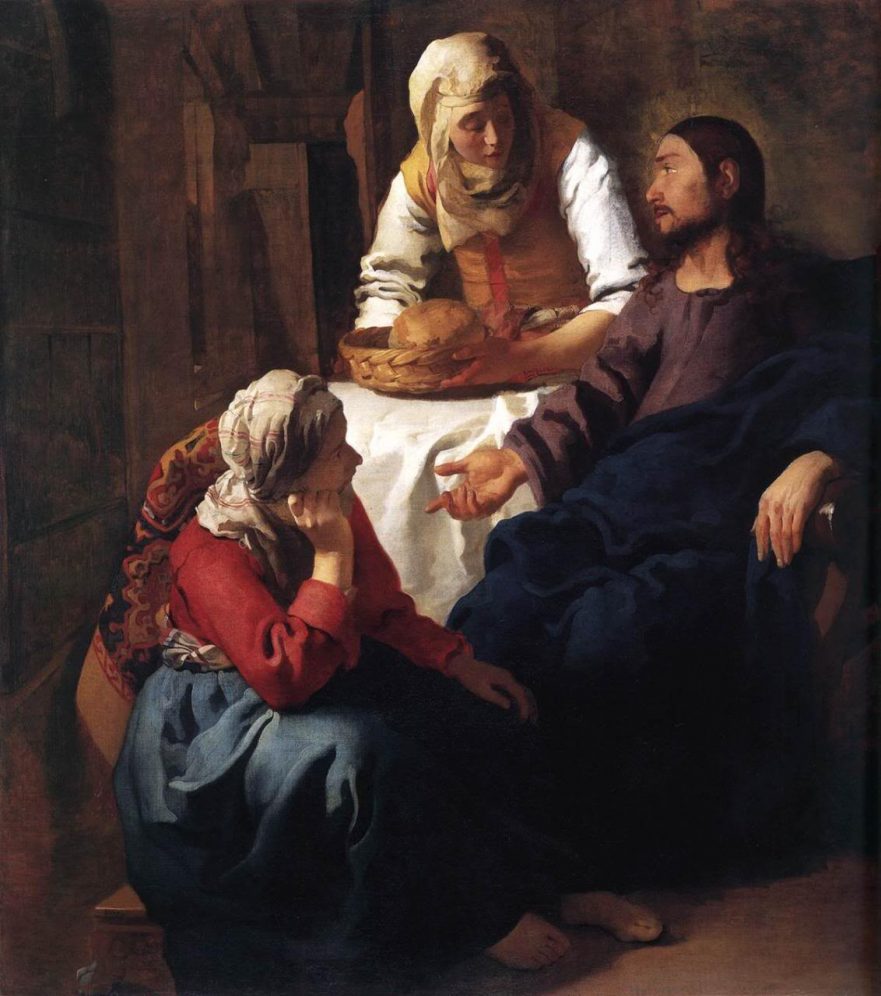In Robert L. Lindsey’s theory of gospel transmission, the Hebrew version of Jesus’ biography and its Greek translation have both been lost. Although none of the synoptic Gospels preserves the original text in its entirety, together they do preserve all, or nearly all, of the stories in the original work.
Years before Matthew, Mark and Luke were written, most of the stories in the conjectured Hebrew Life of Jesus had been arranged topically. Consequently, the synoptic Gospels do not always preserve the original context in which a saying of Jesus was spoken. In order to better understand the Gospel accounts, it often is helpful to recombine those passages that seem to originally have stood together.
Lindsey’s research indicates that it is possible to recover many of the original longer stories by rejoining passages which, though now found scattered in the gospel texts, are connected thematically and linguistically.
One of the “longer” gospel stories that Lindsey has suggested is composed of four passages: Luke 10:38-42; Matthew 6:25-34 (= Luke 12:22-31); Luke 12:16-20; and Luke 16:19-31.[1]
Premium Members and Friends of JP must be signed in to view this content.
If you are not a Premium Member or Friend, please consider registering. Prices start at $5/month if paid annually, with other options for monthly and quarterly and more: Sign Up For Premium
Lindsey’s discovery also allows us to see Jesus’ teaching style. Like a typical first-century sage, Jesus did not deliver formal sermons, but as he traveled the country with his disciples he commented upon situations such as Martha’s anxiety or the widow’s contribution of two small coins (Luke 21:1-2). Jesus used such incidents as springboards for his teaching, prefacing his remarks with “I tell you,” and concluding with a pair of parables to illustrate and confirm the teaching.

- [1] For another such literary complex, see “Discovering Longer Gospel Stories.” ↩



